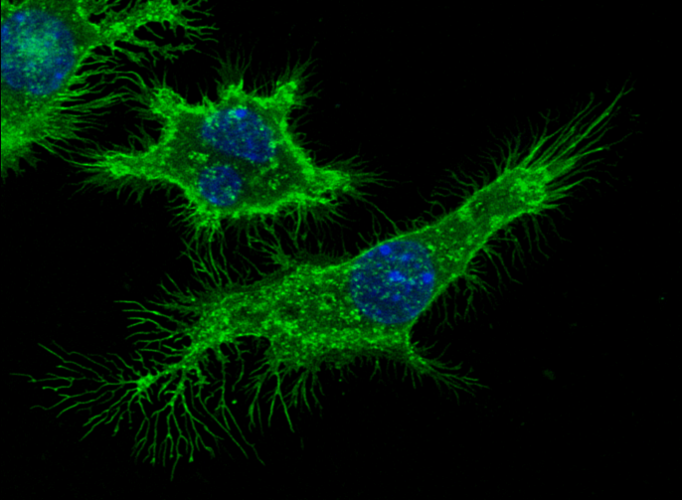How Macrophages Settle Down
Share
Tissue-resident macrophages are pivotal cells of the immune system. They exist in many shapes, and it has so far remained unclear how they colonize the body and give rise to the observed variety. In a study published in Science, the underlying differentiation and specification mechanisms are unraveled.
Macrophages engulf and destroy everything that is not clearly marked as a healthy part of the organism. For example, they target fragments of dead cells, invading microbes, and cancer cells. But the capabilities of macrophages go further: They also play a key role in the recruitment of cells of the adaptive immune system and undertake a number of tissue-specific tasks, which requires them to form organ-specific cell types called tissue-resident macrophages.
How those functional diverse cells develop from their shared embryonic origin was obscure – until now: A new study by an international collaboration of scientists comprising researchers from the Memorial Sloan Kettering Cancer Center in New York, the Life and Medical Science Institute of the University of Bonn and CeMM sheds light on the complex mechanisms that drive the differentiation and specification of tissue-resident macrophages.
The researchers combined transcriptional, molecular, single-cell and in-situ methods for spatio-temporal analysis of macrophage development in mice.The results suggest a two-step model: First, the embryonic macrophage progenitor cells differentiate into pre-macrophages. In a second step, these progenitor cell types settle down in their target tissues and rapidly diversify into specialized tissue-resident macrophages. The latter phase depends on the expression of transcription factors that vary between tissues. It was specifically shown that the liver-specific transcription factor Id3 drives the differentiation of Kupffer cells as the tissue-resident macrophage cell type of the liver.
Publication:
Elvira Mass#, Ivan Ballesteros#, Matthias Farlik#, Florian Halbritter#, Patrick Günther#, Lucile Crozet, Christian E. Jacome-Galarza, Kristian Händler, Johanna Klughammer, Yasuhiro Kobayashi, Elisa Gomez-Perdiguero, Joachim L. Schultze, Marc Beyer*, Christoph Bock* and Frederic Geissmann*. Differentiation and specification of tissue-resident macrophages, Science, 2016. DOI: 10.1126/science.aaf4238. # These authors contributed equally to this work; * MB, CB and FG are co-senior authors of this study.
Funding:
This study was partially funded by a New Frontiers Group award of the Austrian Academy of Sciences.

